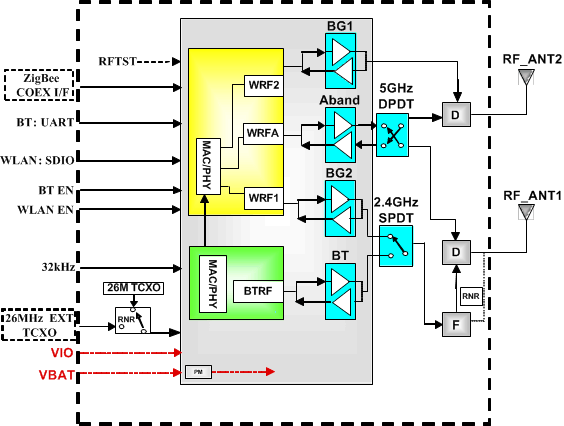SWAU085F July 2011 – January 2022
4.3.1 Supported Antenna Configuration
Table 4-1 describes the supported antenna mode configurations.
Table 4-1 Antenna Mode Supported Configuration
| Antenna Mode | TX | RX | ||
|---|---|---|---|---|
| Chain 1 | Chain 2 | Chain 1 | Chain 2 | |
| 5-GHz SISO | X | A Band | X | A Band |
| 2.4-GHz SISO | X | BG2 | X | BG2 |
| 2.4-GHz MIMO | BG1 + BG2 | BG1 + BG2 | BG1 + BG2 | BG1 + BG2 |
RF_ANT1 is the main antenna for 2.4-GHz SISO and the default antenna for the 5 GHz on the WL1837 and WL1807 modules.
RF_ANT2 is a MIMO-only (MCS8 to MCS15) secondary antenna for 2.4-GHz MIMO operation and can be a diversity antenna for the 5 GHz on the WL1837 and WL1807 modules.
Figure 4-8 shows an example of the antenna connection that covers all antenna mode configurations.
 Figure 4-8 TI Module WL1837 Block Diagram
Figure 4-8 TI Module WL1837 Block Diagram